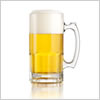您的购物车

 Thailand: Beer continues to hold commanding share of Thai market but rise in wine and cocktails popularity is noticeable
Thailand: Beer continues to hold commanding share of Thai market but rise in wine and cocktails popularity is noticeable
Thailand’s alcoholic beverage market is experiencing significant shifts as consumer preferences evolve and the country’s tourism sector continues to recover. While beer remains the dominant choice for both locals and visitors, there is a noticeable rise in the popularity of wine and cocktails, particularly those made with white spirits such as tequila, rum, vodka, and gin. This change comes as whisky, once a staple in Thai bars and restaurants, loses ground due to changing tastes and a dated image among younger consumers, Vinetur reported on October 16.
Recent data from the International Wine and Spirits Research (IWSR) shows that total beverage alcohol volumes in Thailand increased by 2% in 2024. However, growth has been flat over the past five years, masking the underlying changes in consumer behavior and market opportunities. The country’s strong tourism industry and lively bar scene are key drivers behind these trends, offering new possibilities for both local and international beverage brands.
Beer continues to hold a commanding share of the market, accounting for more than 70% of total beverage alcohol volumes in 2024. Local brands are especially popular, benefiting from widespread availability and affordable prices. These beers are often enjoyed with food, complementing the spicy and flavorful Thai cuisine. While craft beers and imports are gaining some attention among niche consumers and tourists, most Thais still prefer familiar local labels. Despite a 3% increase in overall beer consumption last year, beer imports declined by 2%, continuing a downward trend seen since 2019.
Wine is emerging as a strong contender in Thailand’s evolving drinking culture. The government’s decision to reduce taxes on wine in 2024 has made imported bottles more accessible, leading to a 3% rise in still wine imports last year. Sparkling wine imports also grew by 3%, though future growth is expected to slow. Chile and Australia remain the leading wine exporters to Thailand, but U.S. and Italian wines are gaining ground, with Italian wine consumption jumping by 9% in 2024. Many Thai consumers, especially women and urban professionals, are turning to wine for its perceived health benefits and lower alcohol content compared to spirits. Wine is now closely associated with social gatherings, restaurant dining, and special events, supported by the growth of wine bars, bottle shops, and festivals in major cities.
Whisky, once a dominant force in Thai bars, is facing challenges from both local competition and shifting consumer preferences. Imported whisky volumes fell by 10% in 2024, with little growth expected in the coming years due to high tariffs and strict advertising regulations. Blended whisky, in particular, is losing its appeal among younger drinkers who see it as old-fashioned. However, single malt and Japanese whiskies are finding new fans, partly thanks to the popularity of Japanese cuisine and cocktails like the highball.
White spirits are experiencing dynamic growth, fueled by Thailand’s vibrant cocktail culture, especially in tourist hotspots such as Bangkok, Phuket, Samui, and Chiang Mai. Tequila and mezcal have seen a surge in demand, with agave spirit volumes rising by 57% in 2024. IWSR forecasts suggest this category will continue to expand rapidly through 2029. Tequila has become a fashionable choice for many Thais, symbolizing sophistication and social status. Other spirits are also benefiting from the cocktail boom: bitters grew by 47%, imported rum by 16%, vodka by 8%, and gin by 6% last year. The international recognition of Bangkok’s cocktail bars—two of which were recently ranked among Asia’s top five—has further energized the local bar scene.
Despite concerns about Thailand’s economic recovery, political uncertainty, and cautious spending by tourists, the country’s efforts to boost tourism and its lively hospitality sector continue to support growth in the beverage market. Local beer brands remain a staple at meals and social gatherings, while wine and cocktails are carving out a larger share of the market. For beverage producers and brand owners, Thailand presents both challenges and opportunities as consumer tastes become more diverse and sophisticated.
后退





